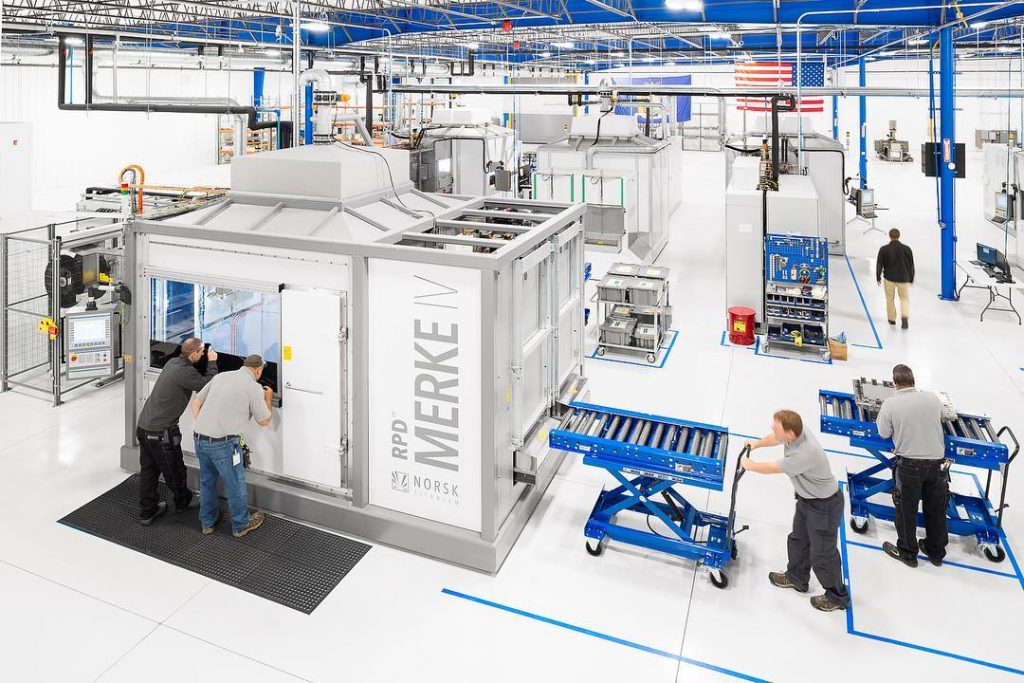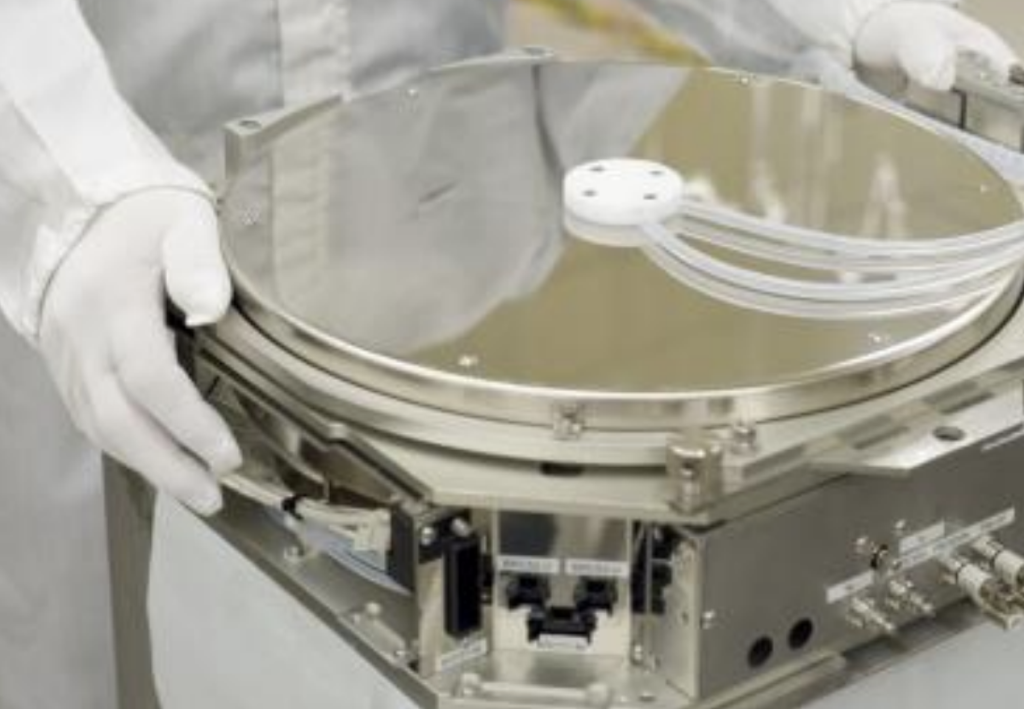Shares in Rapid Plasma Deposition (RPD) 3D printing developer Norsk Titanium (NOK) have dipped 30.6% despite the firm unveiling fresh plans for expansion.
As revealed in its recent financials, Norsk Titanium generated $1 million in revenue during H2 2021, 233.3% more than the $300,000 it brought in over H1 2021, but still $250,000 to $500,000 less than expected, after it was unable to carry out a contract with client Boeing, due to delays caused by regulatory issues around its 787 aircraft.
In light of this, the company’s CEO Michael Canario unveiled plans on its earnings call to diversify its addressable markets, moving into the industrial and defense sectors, with the aim of hitting $150 million in revenue by 2026. However, investors haven’t reacted well to the news, with the firm’s shares diving between the run-up to the results’ release on March 1, 2022, and the 24 hours since their publication.
“Although our largest opportunity continues to be in commercial aerospace structural parts, we capitalized on the slow-down in the commercial aerospace market to expand our reach to the defense sector and other industries,” explained Michael Canario, CEO of Norsk Titanium. “I am excited to see this expansion of our capabilities into new markets as we continue our progress in commercial aerospace.”
“We’re moving quickly to try and take our technology across adjacencies that fit our profile and we’re quite excited about those opportunities.”

Norsk Titanium’s H2 2021 results
Given that Norsk Titanium’s earnings come from both manufacturing and commercial R&D projects, with the latter often arriving in the form of grants, it reports them across two separate divisions: Revenue and Other Income. H2 2021 saw a shift in the firm’s reliance on its Revenue income, which brought in $700,000 more than it had done in H1 2021, as its Other Income fell $1.2 million over the period.
On Norsk Titanium’s earnings call, Canario explained how its business had been affected by delays to Boeing’s aircraft deliveries during the period that “impacted the entire commercial aerospace market.” However, citing the projections of Boeing and the firm’s other main client Airbus, that aviation may not fully recover from the impact of COVID-19 until 2025, Canario said delays have given it more R&D time.
During what turned into a development-focused H2 2021, Norsk Titanium was therefore able to deliver the first part designed using its RPD Builder tool. According to the company, the software is capable of reducing component lead times from weeks to a matter of hours, and it demonstrated this by producing a 120kg demonstrator for semiconductor supplier Hittech, which is now undergoing testing.
Meanwhile, when it comes to the reasons behind Norsk Titanium’s share price decline, it’s likely that investors looked negatively upon its H2 2021 profit/loss results. While the firm managed to raise $33 million over the course of FY 2021, its cash burn rate continues to be around $1.8 million per month, and its EBITDA for H2 2021 came in at -$8.5 million.
Although the business’ VP of Corporate Finance Ashar Ashary clarified on the earnings call that this took its FY 2021 figure to -$16.8 million, a 62.5% rise on the -$27.3 million it reported in FY 2020, and it was committed to becoming “cash-neutral” by 2026, it’s possible that a lack of short-term profitability has affected its investors’ confidence.
| Financials ($) | H1 2021 | H2 2021 | Difference (%) | FY 2020 | FY 2021 | Difference (%) |
| Revenue | 0.3m | 1m | +233.3 | 0.4m | 1.3m | +225 |
| Other Income | 2.6m | 1.4m | -46.2 | 0.6m | 4m | +566.7 |
| Total | 2.8m | 2.4m | -14.3 | 1m | 5.3m | +430 |
| EBITDA | -8.2m | -8.5m | -3.7 | -27.3m | -16.8m | +62.5 |
| Net Profit/Loss | -8.6m | -7.3m | +15.1 | -42.9m | -16m | +168.1 |
A vertical expansion plan
Traditionally, Norsk Titanium has sought to address aerospace use cases with its DED technology, having previously 3D printed a structural fuselage part for Spirit Aerosystems, before going on to become recognized as part of Boeing’s Material Allowables Program.
However, during the company’s earnings call, Canario revealed that the process of qualifying such parts can take multiple years, thus it’s now seeking to expand in the industrial and defense markets. Already, Norsk Titanium is said to be working with two Department of Defense contractors on the qualification of materials at its Plattsburgh complex, which could lead to their use within defense applications.
“Our first industrial component is now undergoing customer testing and we’re making significant progress on qualifications in the defense industry,” Canario said on the call. “We’re quite happy with the progress that we’ve made in the last 6 months, and we’re very much looking forward to making some significant announcements as we move forward.”
More broadly, Canario also highlighted how the cost, lead time and efficiency benefits of adopting its technology continue to make it attractive to manufacturers, and that its US and Norwegian facilities have the capacity to support up to $300 million in revenue. Over the next 4 years, the firm’s CEO added that it’ll therefore aim to inch towards that figure, first hitting $15 million in 2023, then $150 million by 2026.

Plotting a path to profitability
On Russia’s invasion of Ukraine, an issue that has cropped up in numerous earnings calls recently, Canario expressed his wish that fighting would end soon, but said the conflict won’t impact Norsk Titanium short-term, and while he admitted that much of the world’s titanium is Russian, he emphasized the longstanding stability of the alloy’s pricing.
Addressing the firm’s upcoming income and run rate in the call’s Q&A, Ashary added that it’s expecting to gain a Norway Innovation grant worth up to $3 million in FY 2022, and while it finished FY 2021 with $22.9 million in cash, at its current rate of spending, it’ll require $35 million to $40 million more to make it to 2026, capital it’s still looking to raise, and it has left the door open to doing so via equity or debt.
Yet, towards the end of this Q&A, Canario was drawn away from such liquidity matters and back to the topic of Norsk Titanium’s vertical expansion. Interestingly, the CEO made it clear that despite his belief in the potential of RPD within industrial and defense settings, he maintained that its most lucrative applications remain in aerospace, thus the company will now continue to focus its R&D on this area.
“We’re pretty confident on the industrial and defense technology adoption and believe that progression into serial production will be faster, but the individual opportunities that we see in those segments, won’t get to double-digit millions quickly,” concluded Canario. “Commercial aerospace has opportunities that are thirty to forty million dollars per application. That’s why we’re on the long path to qualification.”
To stay up to date with the latest 3D printing news, don’t forget to subscribe to the 3D Printing Industry newsletter or follow us on Twitter or liking our page on Facebook.
For a deeper dive into additive manufacturing, you can now subscribe to our Youtube channel, featuring discussion, debriefs, and shots of 3D printing in-action.
Are you looking for a job in the additive manufacturing industry? Visit 3D Printing Jobs for a selection of roles in the industry.
Featured image shows the production floor at Norsk Titanium’s Plattsburgh facility. Photo via Norsk Titanium.



